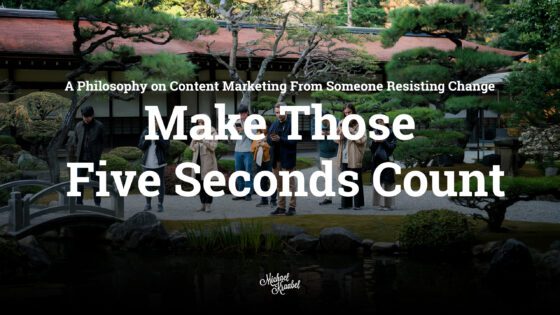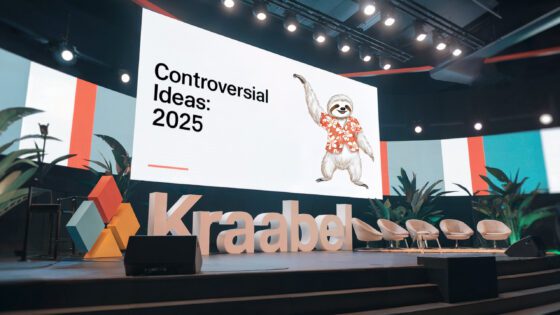Marketing keeps shifting, and 2025 looks like a year where the gaps between companies that adapt and those that don’t will grow even wider. I’ve been watching a few trends closely—some exciting, some concerning. Here’s where my head’s at right now.
Every January, I put together a trend report—not just as a way to track what’s happening in marketing, but to make sure I’m staying ahead of the shifts in technology, consumer behavior, and strategy. Marketing doesn’t stand still, and neither should we. Some trends evolve gradually, while others hit fast, forcing brands to adapt or get left behind. By looking at what’s coming, I can adjust my approach, test new methods, and help brands stay competitive before the landscape changes again. Here’s what I’m watching for 2025.
AI Is Useful, but Not Magic
AI keeps getting better, but I see too many companies expecting it to do the work for them. Automation saves time, but it still needs human oversight. Brands using AI to enhance creativity and strategy—not replace them—will pull ahead. Personalization will go deeper, but the trick is making it feel natural, not creepy.
“AI will shape marketing more than ever, but brands that rely too much on it without human input will miss the mark.” (Forbes)
AI Search & Chatbots Reshape SEO
Google’s AI-powered search results (like the Search Generative Experience) are changing how people find information. SEO strategies need to account for conversational queries and voice search more than ever.
Tip: Optimize content for questions and natural language, not just keywords.
Greenwashing Won’t Cut It
Sustainability isn’t a buzzword anymore—it’s an expectation. Customers want real action, not just marketing campaigns. I’ve been looking into how companies are embedding sustainability into their supply chains and business models instead of just slapping a “green” label on things.
“Legislation and consumer demand will push businesses toward real sustainability efforts in 2025.” (Kantar)
Social Media as a Storefront
Social commerce isn’t new, but platforms like TikTok Shop are making impulse buys easier than ever. People aren’t just discovering brands on social anymore—they’re buying on the spot. If a business doesn’t have a plan for direct sales through social platforms, they’ll lose ground fast.
“TikTok Shop has taken off, turning passive viewers into active buyers.” (WSJ)
The Creator Economy Goes Mainstream
Influencers aren’t just for fashion and beauty brands anymore. B2B companies, SaaS firms, and even financial services are investing in creator partnerships. Trust and authenticity drive results better than traditional ads.
Example: LinkedIn creators sharing real insights are becoming just as influential as industry analysts.
Short-Form Video Keeps Dominating
TikTok, YouTube Shorts, and Instagram Reels remain the top-performing content formats. Brands need to master quick, engaging storytelling that captures attention in under 10 seconds.
Example: Duolingo’s TikTok strategy—a mix of humor and brand storytelling—drives massive engagement.
Experiences Over Ads
People are tuning out traditional ads. They want interaction. I’ve been researching brands that create real-world and digital experiences instead of just pushing messages. The ones that get it right pull people in naturally, rather than shouting for attention.
“Brands that focus on immersive, user-generated experiences will build stronger connections.” (Vogue Business)
Data Privacy: A Real Selling Point
Customers are paying attention to how brands handle their data. Transparency and control over personal info will become competitive advantages. I’ve been looking at brands that position ethical data practices as a reason to trust them—because that’s where things are headed.
“Consumers expect privacy-first marketing, and brands that deliver will win loyalty.” (Deloitte Digital)
Marketing Attribution Gets Harder—But More Important
With more privacy restrictions and tracking challenges, proving which marketing efforts drive results will be a major focus. Brands need better attribution models and tools that track customer journeys across multiple touchpoints.
Example: Multi-touch attribution models help brands understand whether a conversion came from an ad, an email, or a social media interaction.
Email Marketing Becomes More Interactive
With rising ad costs, email marketing is regaining power. But boring newsletters won’t cut it. Expect more interactive elements—quizzes, polls, personalized video messages—to drive engagement.
Stat: Email marketing delivers an ROI of $42 for every $1 spent (Source: HubSpot).
What Companies Need to Do Now
- Use AI the right way—as a tool, not a crutch.
- Commit to sustainability—because customers will call out anything less.
- Make social commerce seamless—or risk losing sales to brands that do.
- Focus on experiences, not just ads—because engagement matters more than impressions.
- Treat data privacy as a feature—and communicate it clearly.
2025 won’t be about big, flashy ideas. The brands that win will be the ones that adapt, stay human, and respect their customers. That’s what I’m watching, and that’s where companies need to focus.





